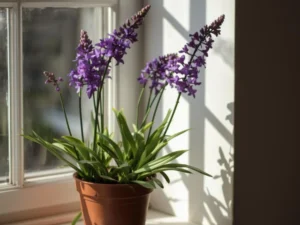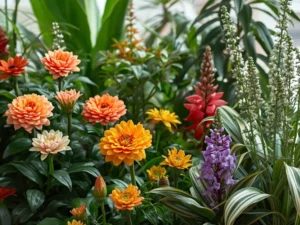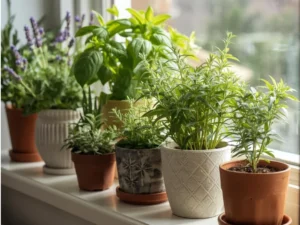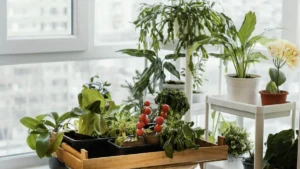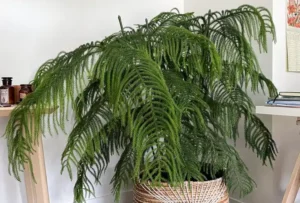Peace lilies remain popular as indoor plants due to their beautiful white flowers and deep green leaves. All the same, you may ask yourself if peace lilies can actually take care of themselves. This is a detailed guide that will strive to break down peace lily care basics so that you gain knowledge about how to keep it blooming.
Understanding Peace Lilies: What Makes Them Unique? 🌱
Prior to giving out instructions on how to take good care of them, it’s important first to grasp what differentiates peace lilies from other plants. These plants, which are scientifically known as Spathiphyllum, are mostly found in tropical regions of America and Southeast Asia. Peace lilies aren’t true lilies but belong to the family Araceae like such other popular indoor plants as philodendrons and pothos.
People adore peace lilies for its ability survive with little light and clean the air around them. However, these are living things like any others that require proper nourishment in order to stay alive.
Can a Peace Lily Care for Itself? 🤔
The answer is no because even though they’re tough enough; peace lilies cannot look after themselves completely without help from anyone else. They rely on environmental conditions and care provided by their owner just like all other crops so as to grow vigorously. Below we have listed crucial aspects concerning maintaining your peace lily.
Light Requirements for Peace Lilies 🌞🌤️
The low light tolerance nature of peace lilies makes them common indoor plants. Nevertheless, bright indirect sunlight provides them with an ideal environment for growth. Here’s what you should do about their illumination needs:
Indirect Light: Position your plant near one window, where it can obtain filtered sunlight through the curtains or blinds. Leaves dry up faster when in direct contact with it and therefore, they turn brown.
Low Light: Peace lilies may not produce flowers often under low light conditions. Hence, if the leaves of your peace lily are green but no flower is there, find a brighter spot for it.
Artificial Light: Office areas and spaces without much natural lighting can also be accommodated by peace lilies through artificial lights. But, please ensure that light intensity is good enough to support growth.
Watering Your Peace Lily: Finding the Right Balance 💧💦
Perhaps watering is the most important aspect in peace lily care. These plants prefer soil that is kept constantly damp but overwatering can lead to root rot. Here are some tips for proper watering:
Check the Soil: Prior to watering it, check its moisture levels by sticking your finger into it about an inch deep. If the soil feels dry then you need to water it.
Watering Frequency: Usually, after seven days have passed since their last watering peace lilies need more water depending on the climate in which you stay. You probably have to water more often during warm seasons.
Avoid Overwatering: For effective drainages at the bottom of pots make sure there are holes made within them so as to eliminate excessive moisture accumulation around roots thus leading to drowning of such parts. Note that this kind of drainage system should be followed by emptying out all standing water from below containers soon after pouring water on them.
Humidity Needs: Mimicking a Tropical Environment 🌧️🌡️
Similar environmental conditions where these indoor plants exist include humid surroundings which resemble those found in tropical zones where they come from naturally. Brown edging on leaves will mean too low humidity levels for these plants. How do I keep my plant’s humidity right?
Mist the Leaves: It’s also possible to maintain high humidity around your peace lily simply by spraying its leaves using fresh tap or boiled water at room temperature.
Arrange your peace lily among other plants to create a more humid microclimate.
A Humidifier: If you live in an extremely dry place, you might consider placing the humidifier in the room where the peace lily is kept
Feeding Peace Lilies: When and How 🌱🌿
Peace lilies don’t require much feeding but moderate fertilization can help with good development and blooming.:Synonyms- Fertilizing Peace Lilies:
Fertilizer Type: Use a balanced, half-strength water-soluble houseplant fertilizer.
Feeding Schedule: Feed your peace lily every 6-8 weeks during the growing season; lower feeding rates during fall and winter when plant growth slows down.
Avoid Over-Fertilization: Overfeeding may cause nutrient buildup in the soil, thus damaging it. If there is yellowing of leaves, consider reducing amount of nutrients given.
Pruning and Repotting: Keeping Your Peace Lily Shaped ✂️🌾
Pruning and repotting are key steps in taking care of peace lily that make sure its beautiful look remains as well as healthy growth.:Synonyms – Pruning and Repotting:
Pruning: Trim back untidy looking brown or yellow leaves or cut off spent flowers at their base to encourage new ones to develop.
Repotting: It is better to repot peace lilies once every one or two years or they become pot bound. Choose a pot that’s about an inch or two larger than its current one and use fresh well drained potting soil mixture.
Common Problems and Their Solutions 🛠️🔍

Even with the best care, peace lilies can have problems. Below are some common problems with solutions:
Yellowing Leaves: This could be due to overwatering or underwatering. Test for soil moisture content regularly and adjust watering frequency accordingly.
Browpn Leaf Tis: Dry air or too much sun can cause brown leaf tips. To increase humidity mist it or move it to a darker place.
Wilting: If your peace lily looks wilted, it may be thirsty. Watering it immediately will revive it in just a few hours
Conclusion:
Can a peace lily take care of itself? Though they are relatively easy to maintain, peace lilies need to be taken care of as per their requirements. By providing adequate light, water, humidity and nutrients, you will enjoy the good health and appearance of your plant.
These are just some reasons that make peace lilies stunning additions to any home and great reminders of how important love and attention is in nurturing living things. With the advice contained therein as you read this guide, you have already realized that becoming an expert on taking care of peace lily is not difficult anymore.



